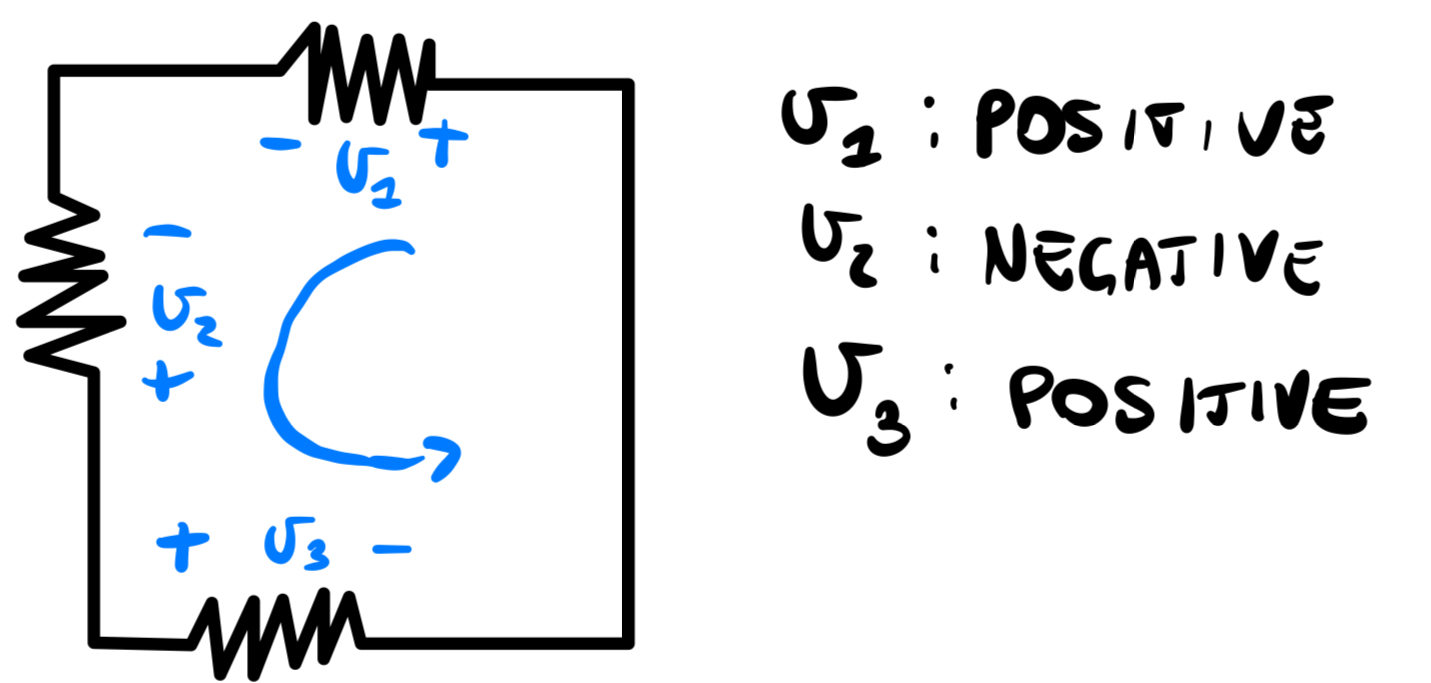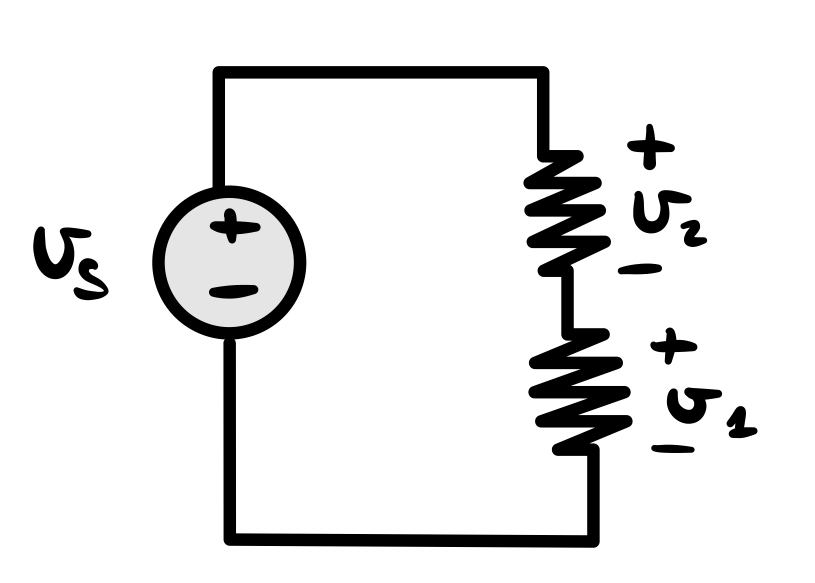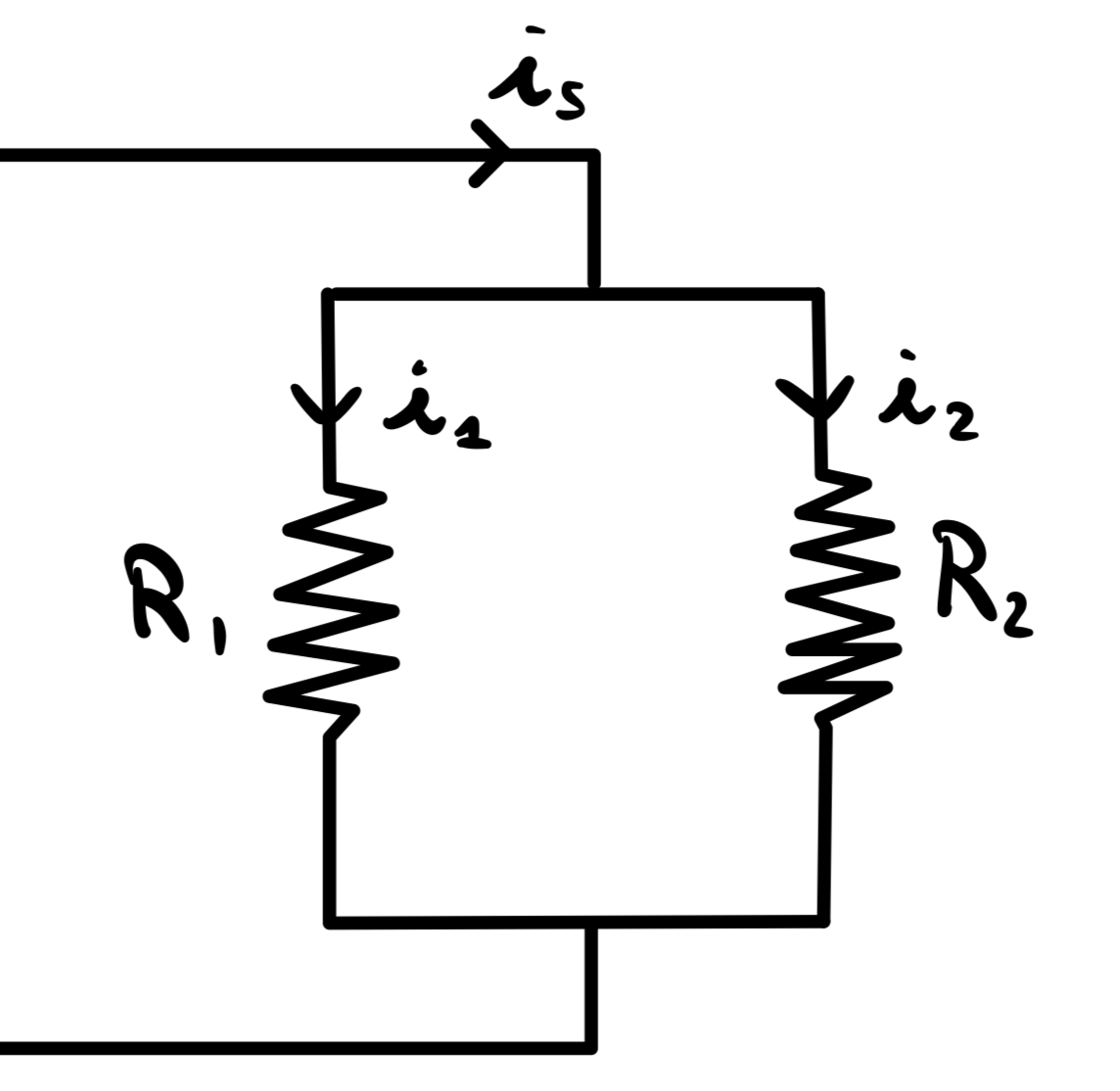Kirchhoff Laws
 http://www.edoardosorgentone.it/
http://www.edoardosorgentone.it/After you read this tutorial, you will learn how to solve a circuit with Kirchhoff Laws so that you will know the behavior of a electrical circuit and its fundamental quantities. Kirchhoff Laws are used in electrotechnics to solve circuits.
Solving a circuit is essential: it means that you know value of voltage and current of each component.
In the last article I talked about electronic theory basics.Now we will see a more practical topic.
ARGUMENTS:
- Kirchhoff Laws: KCL,KVL,how to solve a circuit
- Tellegen Theorem
- Series and parallel connection
- Exercises
- Voltage and Current Divider
1-Kirchhoff Laws
KIRCHHOFF CURRENT LAW(KCL)
KCL is the Kirchhoff first law and it express the conservation of charge entering and leaving a node.
The same goes for any closed surface.
CONVENTION: it is considered positive a current that leave the node and negative a current that enters in the node.

This is what the example circuit would look like:
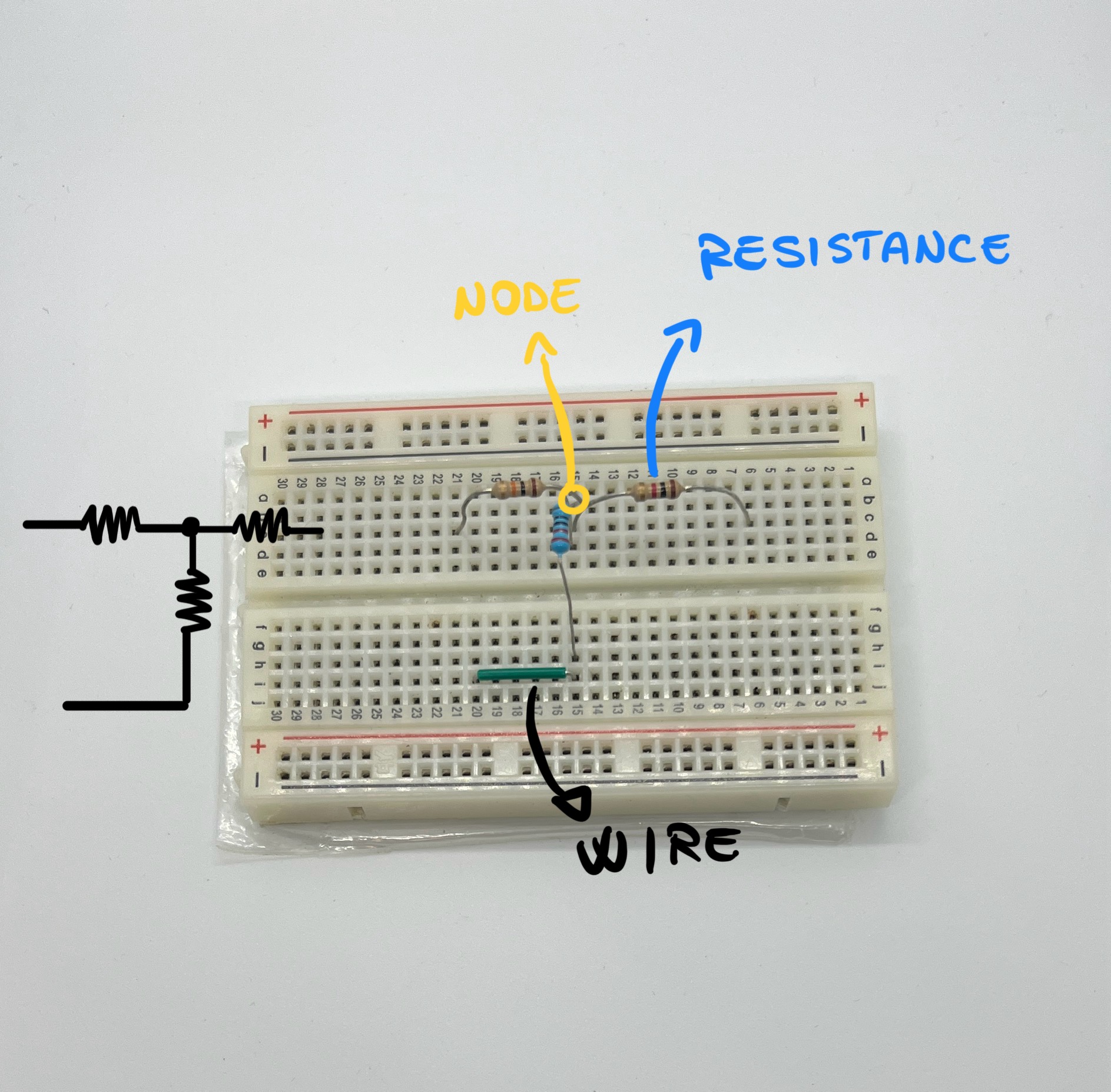
KIRCHHOFF VOLTAGE LAW(KVL)
KVL is the same of KCL but for voltage in a loop:
convention: counterclockwise turn on the loop; when you first meet the + and then the -, that voltage on that component will be positive.Let’s see an example:
So here v1 will be positive since you meet + first.
v2 is negative because you meet first - and then +(when turning counterclockwise).
v3 is positive because you meet + first.
Sometimes you have to assign signs: if you have the current sign, you have to assign the voltage, just assign + on the terminal in which current enter and - to the terminal in which current exit.

TELLEGEN THEOREM
SERIES AND PARALLEL CONNECTION
When connecting 2 elements, really often they can be connected in 2 ways:series or parallel.
In some cases components are neither in series nor in parallel(in that case you have to use Y-∆ connection), but let’s take it slow and learn first series/parallel.
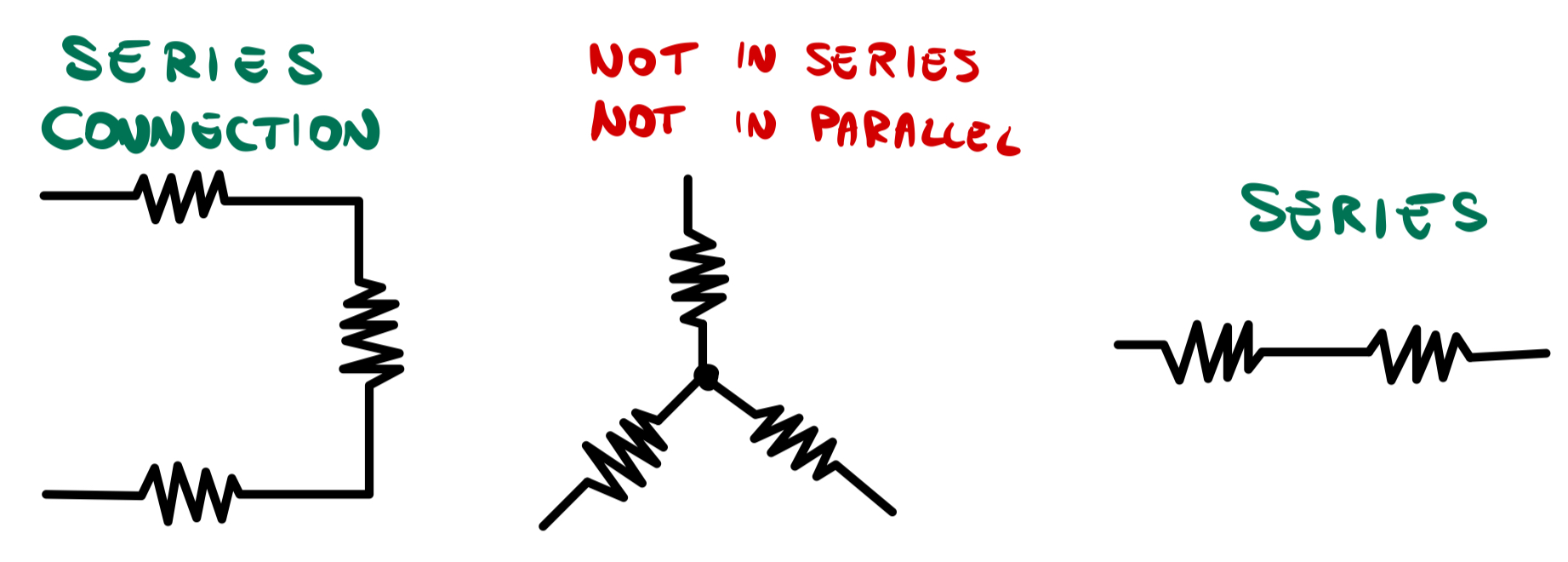
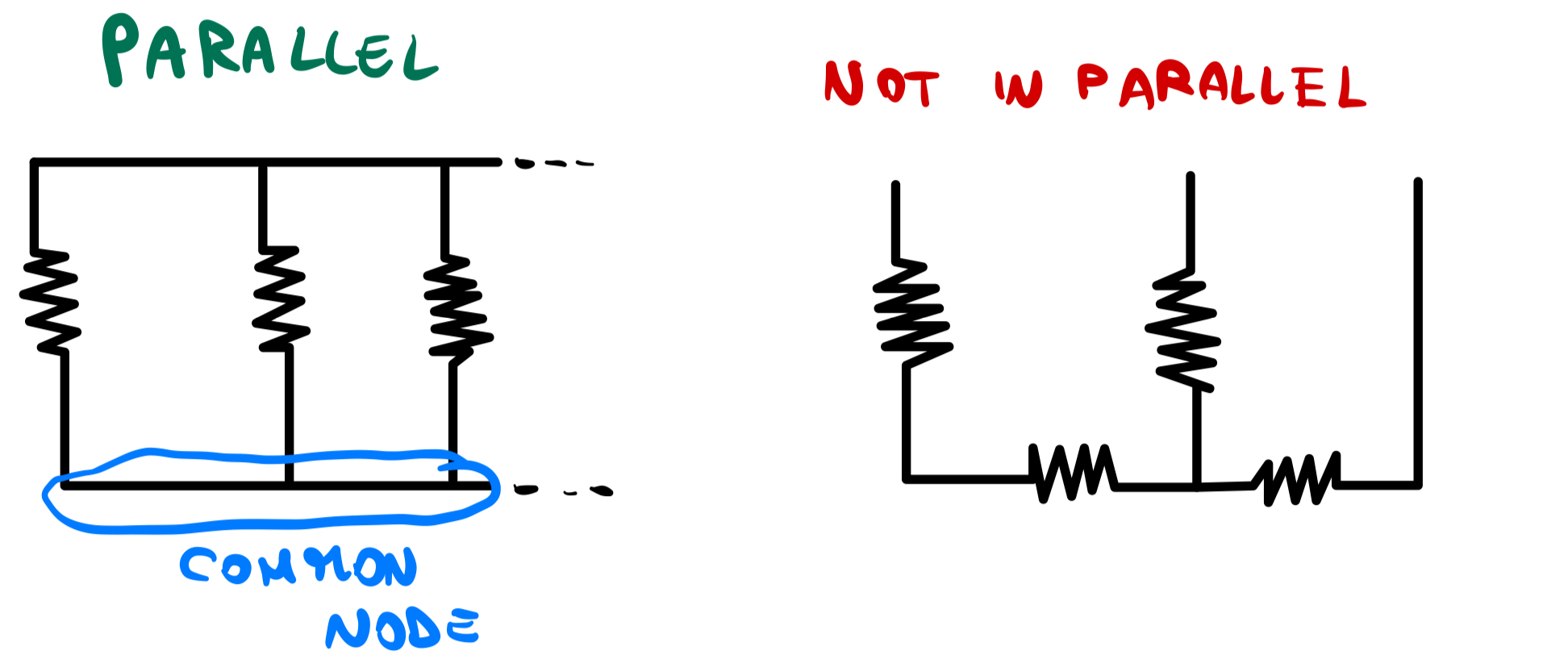
The great thing is that you can transform series and parallel connected resistors into a single equivalent resistor.
Series:
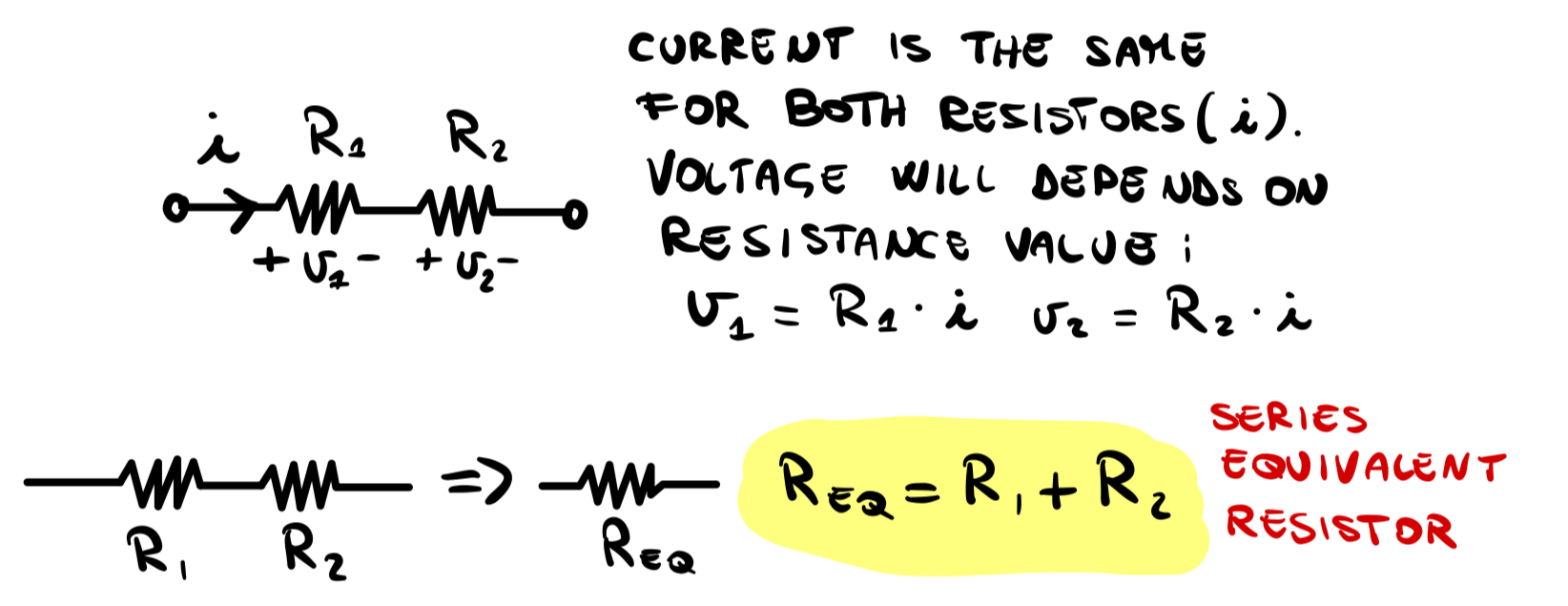
Parallel:
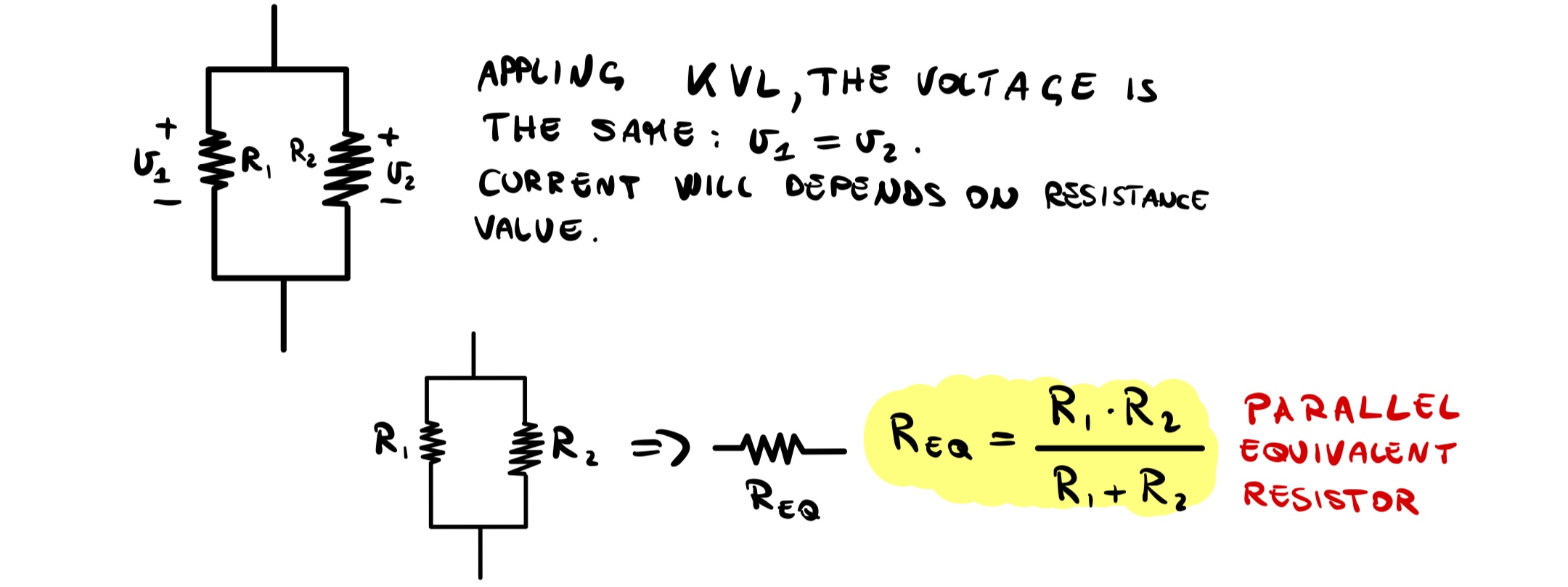
Another formula that can be used for parallel is this: 1
Now let’s see some exercises:

In the first exercise, resistors are all in parallel, so you solve it calculating the equivalent 2 by 2.

In e.2 resistors are just in series so it is really simple to solve it.

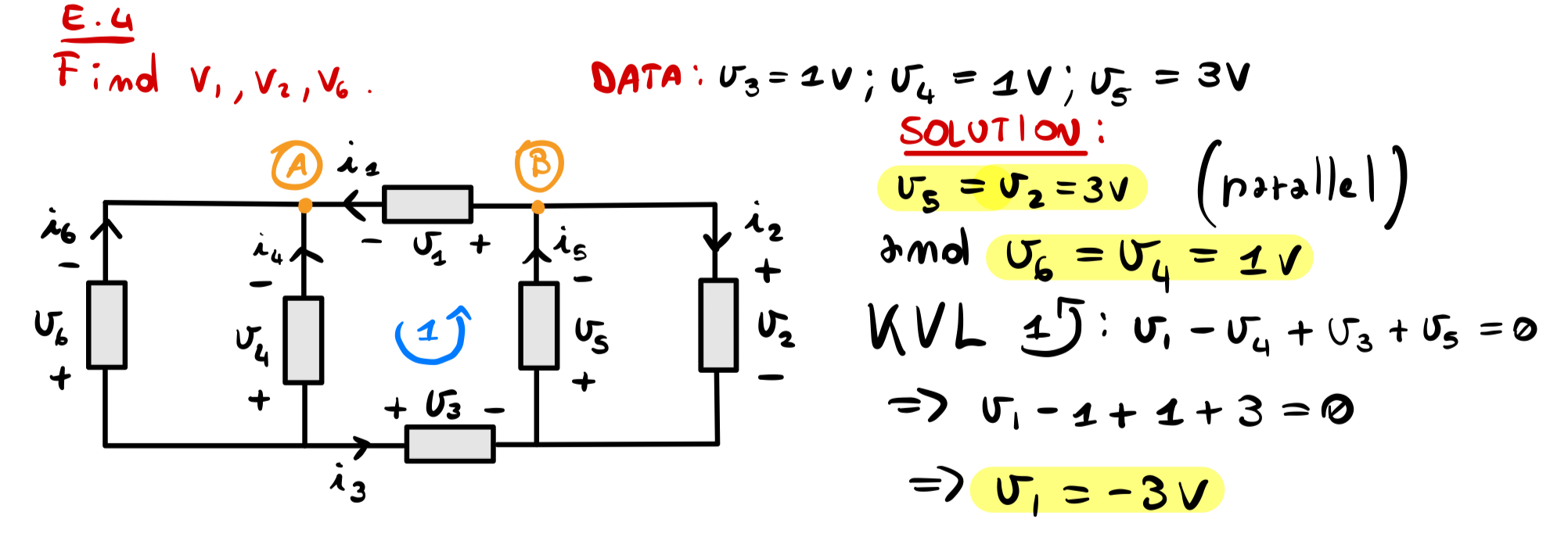
VOLTAGE AND CURRENT DIVIDER
A voltage divider is a simple circuit that consists of two resistors connected in series across a voltage source. It divides the total voltage across the resistors in proportion to their resistance values.
A current divider is a similar concept but is used to divide the current flowing through a branch of a parallel circuit into different currents. It involves two or more parallel resistors through which the current is split in proportion to their resistances.
Now it’s your turn!
Practice as much as possible with Kirchhoff Laws, I’ll give you an exercises:
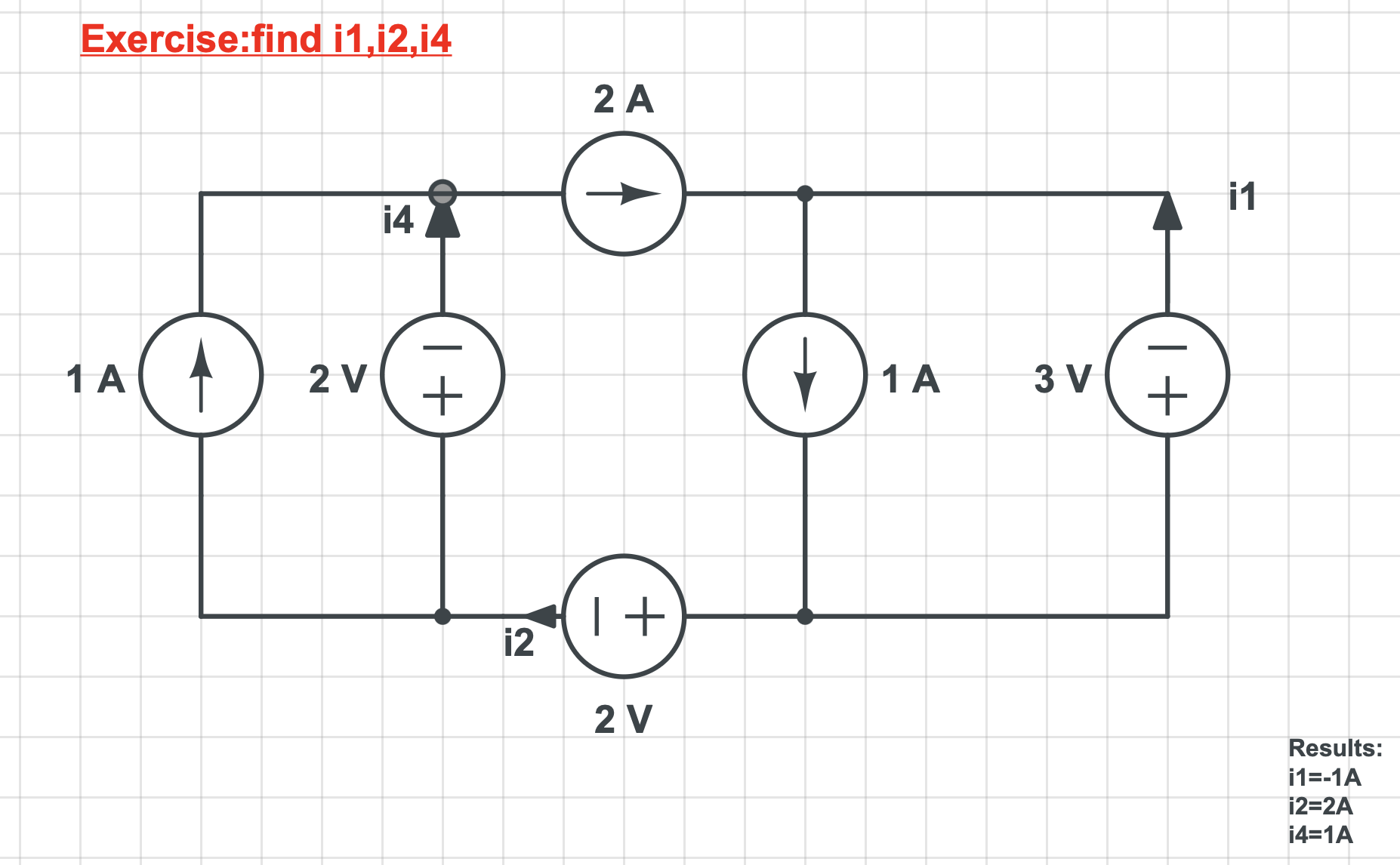
ps:use Kirchhoff Laws.
Feel free to send me an email if something is not clear! 😄
 http://www.edoardosorgentone.it/services.html
http://www.edoardosorgentone.it/services.html